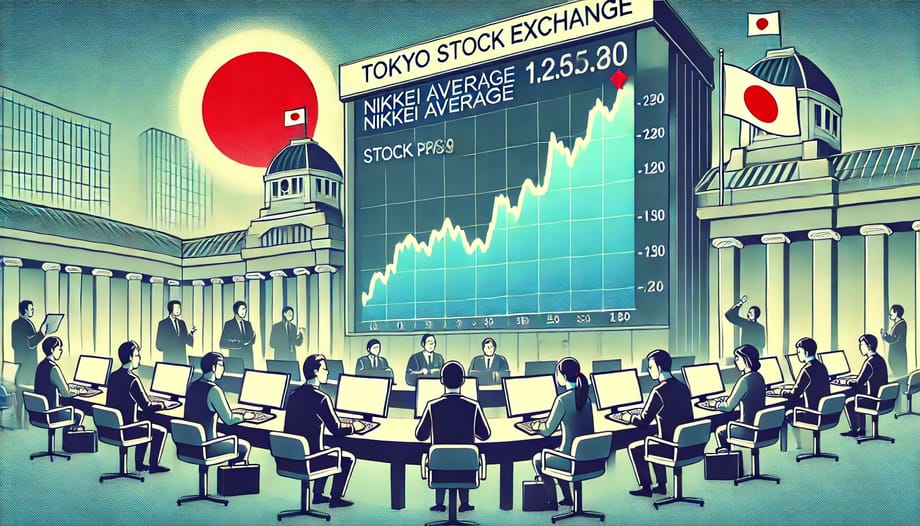This is an AI translated post.
Tokyo Stock Market Closes Up 2,957 Yen in Morning Trading
- Writing language: Korean
- •
-
Base country: Japan
- •
- Others
Select Language
Summarized by durumis AI
- The Nikkei average on the Tokyo Stock Exchange closed 2,957.90 yen higher at 34,416.32 yen on the 6th, up from the previous day.
- Fueled by a weaker yen and expectations of a slowdown in US interest rate hikes, the Japanese stock market continues its upward trend. In particular, the weak yen is leading to increased overseas earnings for Japanese companies, driving up the share prices of export-oriented companies.
- However, the Nikkei average is expected to be affected by a variety of factors in the future, including global economic conditions and US interest rate policies.
The Nikkei 225 Average, a leading indicator of the Japanese stock market, closed at 34,416.32 yen on Monday morning, up 2,957.90 yen from the previous day's close.
The Nikkei Average represents the average price of 225 stocks listed on the Tokyo Stock Exchange. The Nikkei Average's movement is considered a key indicator of Japan's economic growth, and it provides important information for investors in formulating their investment strategies.

The Japanese stock market has recently been on an upward trend, fueled by expectations of a weakening yen and a slowdown in the pace of US interest rate hikes. The weakening yen, in particular, is boosting overseas earnings for Japanese companies, driving up share prices for export-oriented businesses.
The Nikkei Average is influenced by a variety of factors, including economic indicators, interest rate fluctuations, political situations, and global oil price movements. Investors must closely monitor the Nikkei Average's movement to formulate their investment strategies.
The Japanese stock market rose in morning trading on Monday, reflecting a positive outlook for the Japanese economy among investors. However, the future movement of the Nikkei Average is expected to be affected by a range of factors, including global economic conditions and US monetary policy.






